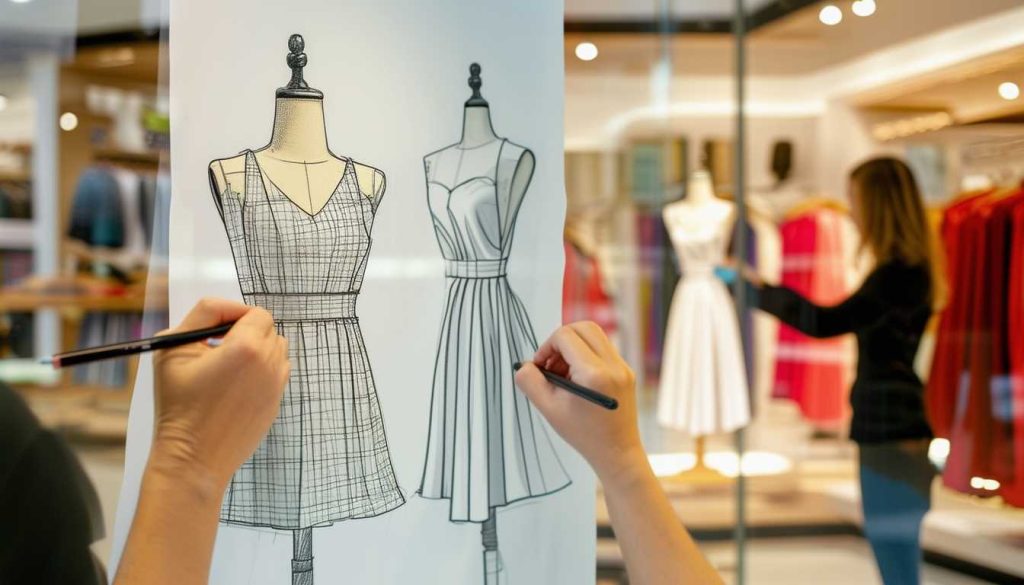10 Must-Have Skills Every Fashion Design Student Should Master
Making a big name in the fashion world excites every aspirant. In an industry where style meets innovation and trends evolve. It's not just sketching pretty outfits anymore. In 2025, the demand for designers who are agile and skilled with tech has increased. Designers who are sustainability-focused and business-minded are reaching every door.
While planning a B.Des in Fashion design, mastering a dynamic mix of creativity and technical skills is important. This will help you stand out in the crowd.
This blog is all about the 10 must-have skills every fashion student should master. If you want to lead, get a step ahead of the current trends. Bring a futuristic approach to your designs. But, how would you do that? Technical tools, getting better guidance and stepping into industry-level programs will help you.
 1. Digital Fashion Illustration & CAD
1. Digital Fashion Illustration & CAD
Choose paperless sketching and adapt technology to showcase your skills. Software like Adobe Illustrator, Photoshop, and CLO 3D is great for creating designs. This software allows realistic fashion illustration and 3D garment simulations.
The main idea is to save time and reduce fabric waste while meeting industry standards. If you understand these tools or adapt to them, you are already a step ahead.
2. Trend Forecasting & Market Research
Predicting the trend is the real superpower as a fashion designer. Fashion moves fast and the best way to keep up with it is to stay updated on the trends. Learn to analyse fashion cycles, study clients' behaviour, and use platforms like WGSN.
Street style is the major fashion area, keeping yourself focused and watching social media helps with trend updates.
3. Sustainable & Ethical Fashion Practices
Sustainable clothing is not a buzzword, it's the basic expectation in 2025 fashion. Understanding eco-friendly fabrics, ethical production, and design principles is important for students. One should know how to reduce a carbon footprint while making bold fashion statements.
4. Garment Construction & Textile Knowledge
Understanding the concept of design is the first step to creating an impressive outfit. Like knowing fabrics, pattern-making, draping and swing are the basic details in fashion. Construct garments to bring your design to life
5. Fashion Technology Integration
There's a fine line between tech and fashion, which keeps merging with time. Technology is evolving the designs, whether it's smart fabric or wearable tech. As a part of learning, students should focus on 3D innovations and laser cutting.
6. Creative Storytelling & Visual Communication
A fashion collection isn’t just clothing—it’s a story. Learn how to build a solid theme, mood board, and design plot. Connect with audiences emotionally through social media and visual communication. You can showcase your brand and collection through many platforms.
7. Business & Fashion Marketing Basics
A strong designer also knows how to sell. Understanding the market to sustain your brand is tricky yet possible with the right strategies. From business models, merchandising, and pricing strategies, you can build the spot. Transforming your hobby to a business model and a fashion label is all you need.
8. Portfolio Development & Personal Branding
Your portfolio is your passport to the industry. It should showcase your best work, design process, and unique style. Think about personal branding. Brand logo, website, and social media boost to build a strong professional identity. A solid portfolio and brand make you memorable.
9. Adaptability & Cultural Awareness
Fashion is unanimously accepted. Knowing cultures, traditions, and body types are crucial to becoming a versatile designer. Your knowledge of the details of the concept makes your design more inclusive.
Trends differ from Tokyo to Paris to New Delhi. Being available and adaptable ensures your designs are globally relevant and significant.
10. Collaboration & Communication Skills
Design doesn’t happen in a vacuum. If you're working with photographers, stylists, models, or manufacturers, collaboration is key. Learn to communicate your ideas through your design. Taking feedback and contributing in a team setting is necessary in classrooms or a career.
AAFT’s Approach to Modern Fashion Design Education
The AAFT leads as a modern fashion design institute. AAFT embraces innovation and creativity and believes in turning them into successful careers. Their B.Des in Fashion Design course is set with an industry-first approach. Adding practical learning, global exposure, and future-forward skills for fine learning.
Here’s how AAFT inspires students for 2025 and beyond:
With modules covering digital design, fashion entrepreneurship, and sustainable practices, students graduate job-ready.
AAFT stresses learning advanced design software, fashion technology, and even AR-based fashion showcases.
Students get to work with nobles from film, media, and photography. Also, it helps in performing arts, promoting real-world collaboration.
Regular masterclasses, workshops, and internships with renowned designers. Ensures a seamless brand bridge from campus to career.
Become a fashion entrepreneur, work with global labels, or launch your own line. AAFT provides the tools, mentorship, and vision to help you achieve your dreams.
Take Away
The fashion in 2025 is not about creating beautiful garments—it's about innovating. Purpose your design with sustainability, and think globally while acting as a local. Passion into success? Master the skills that bridge creativity with technology and design with strategy.
The right education can be your launchpad. AAFT’s futuristic approach, tech-integrated learning, and industry collabs give you a chance to lead. Work with international fashion houses, start your own brand, or revolutionize fashion tech. AAFT can help you get there!
Advertise on APSense
This advertising space is available.
Post Your Ad Here
Post Your Ad Here

Comments